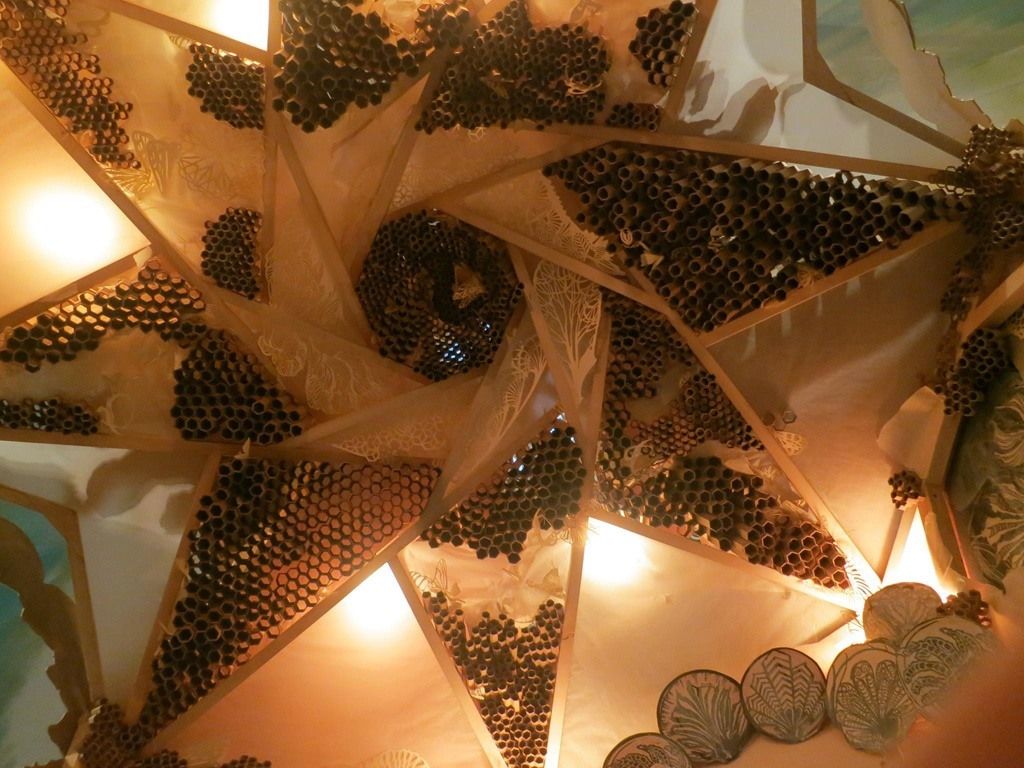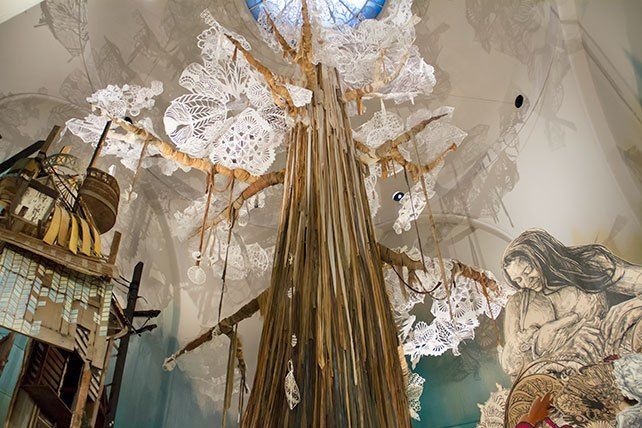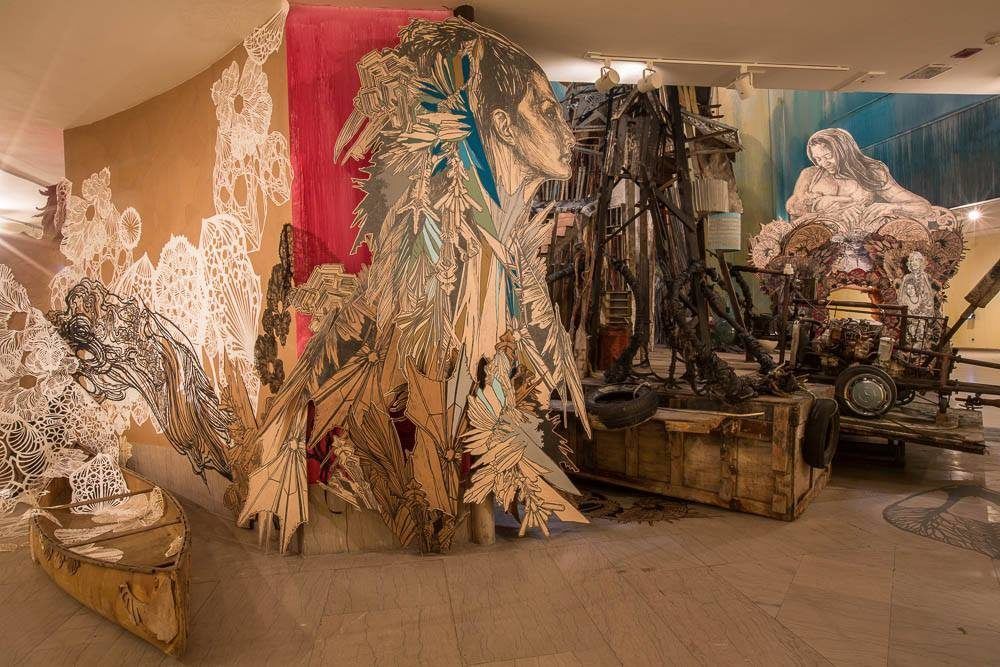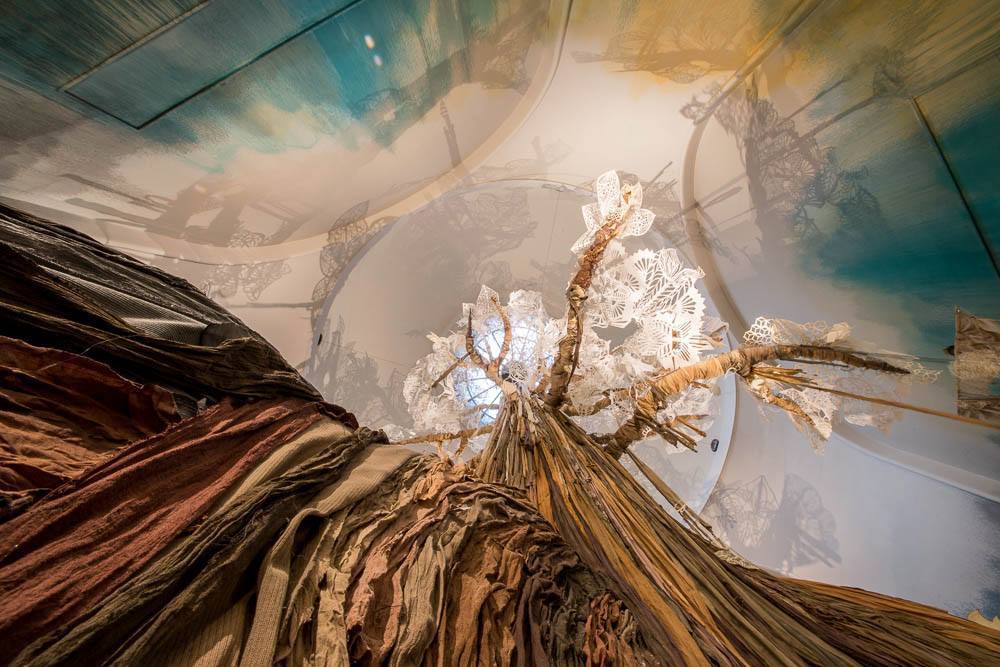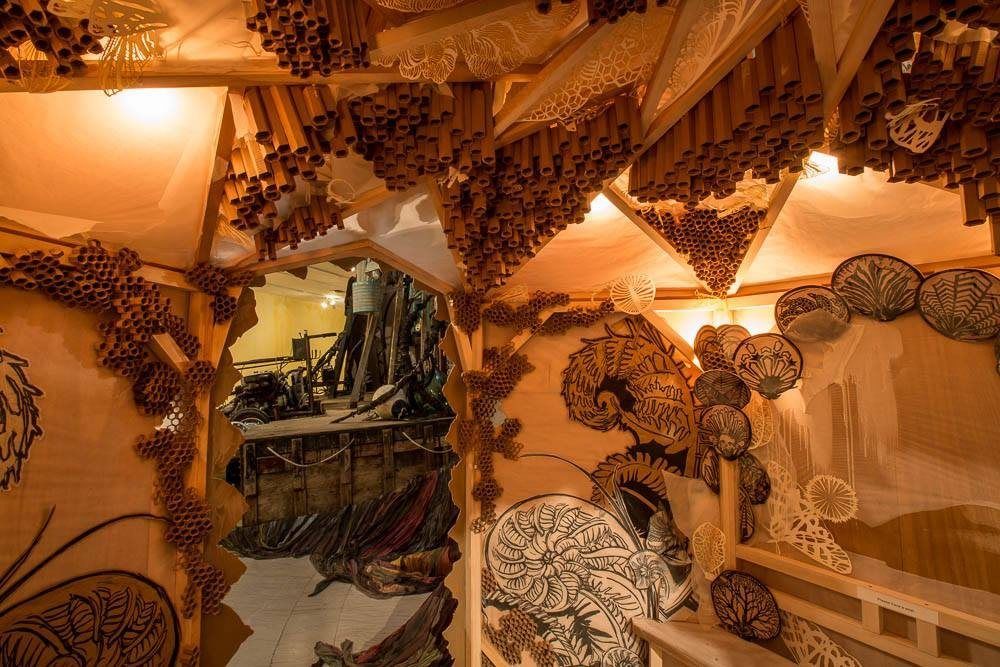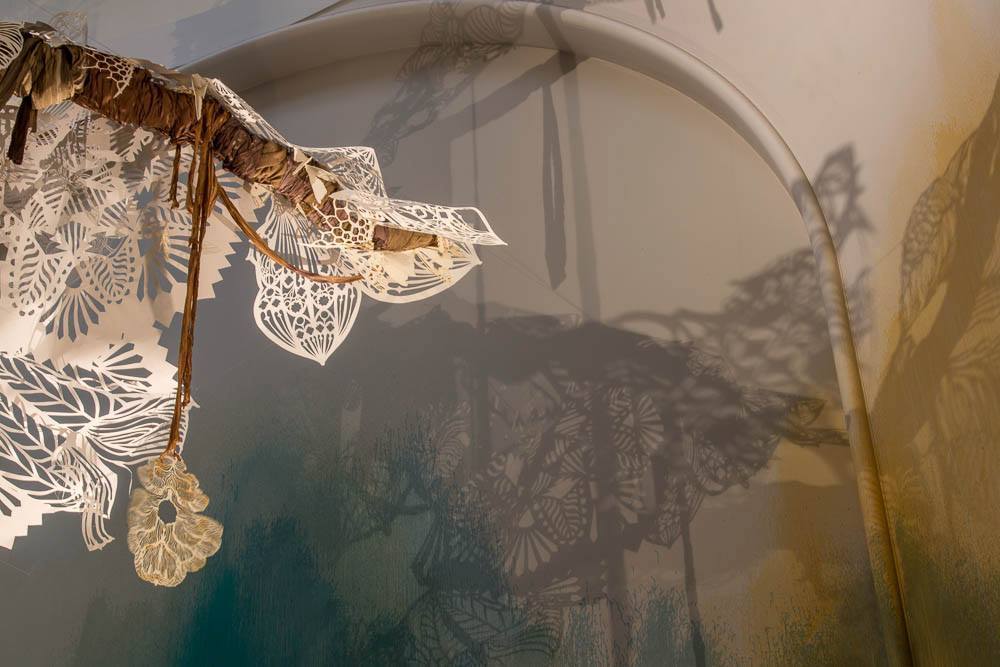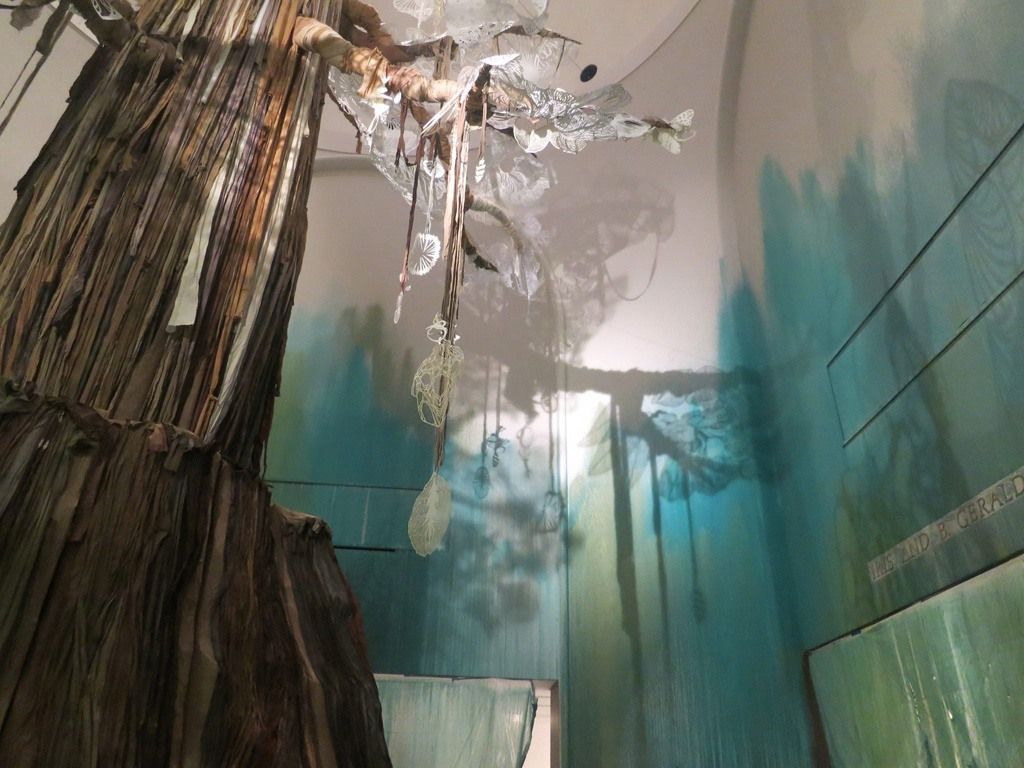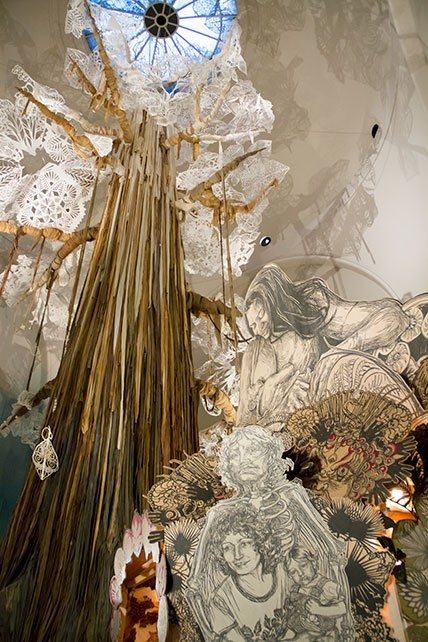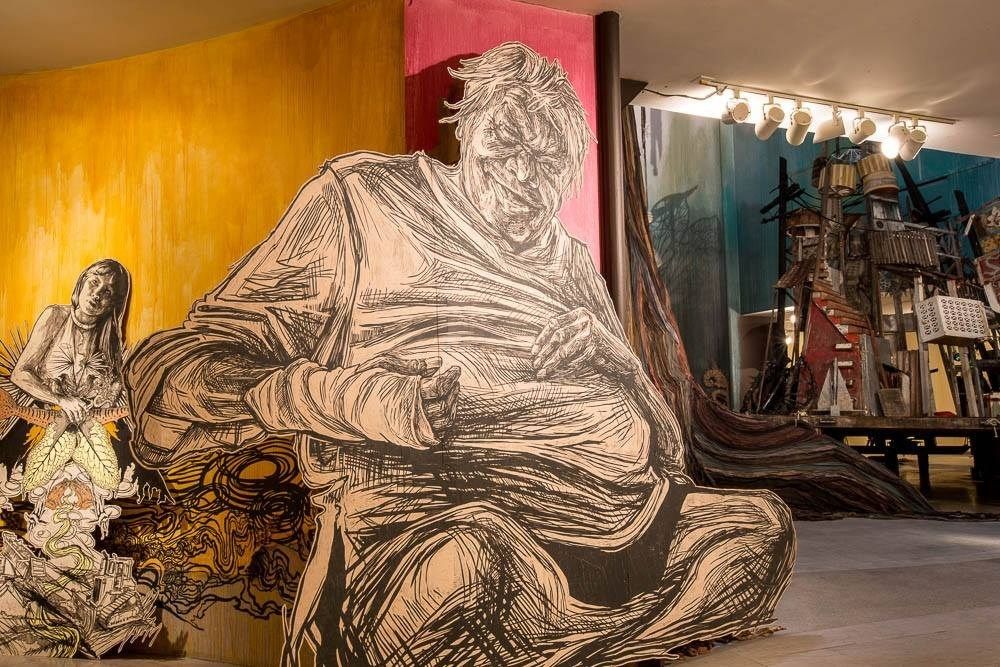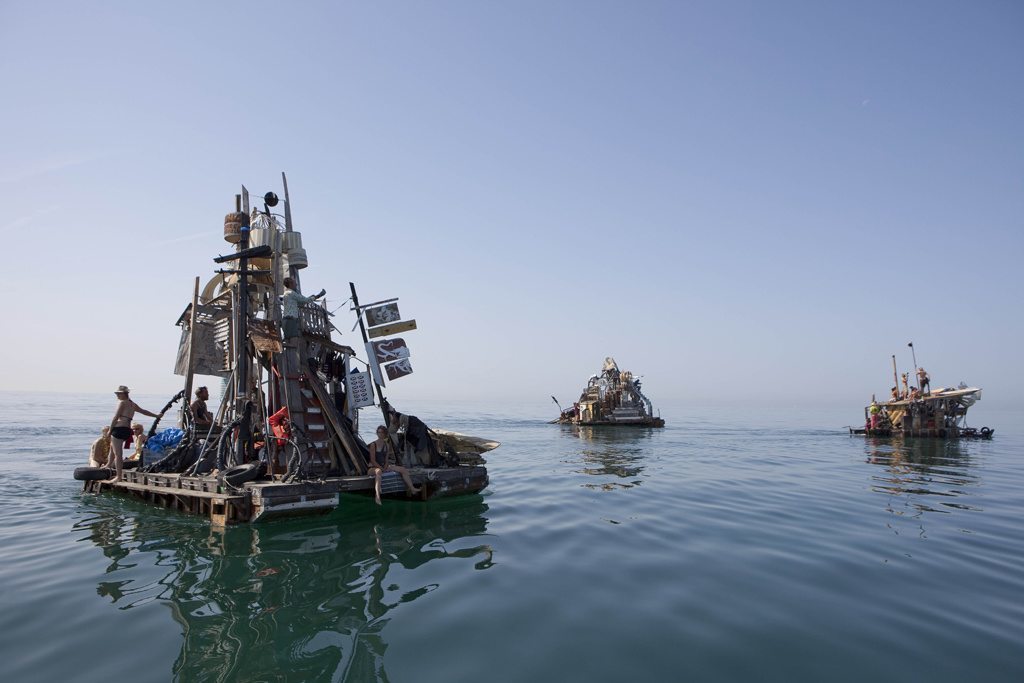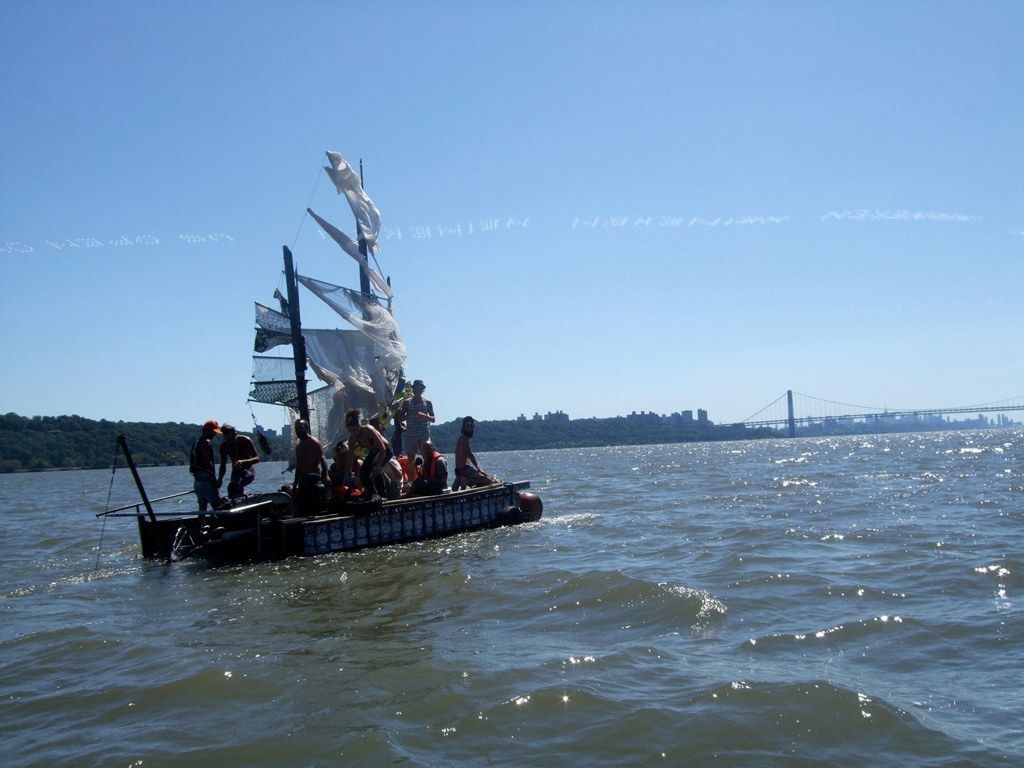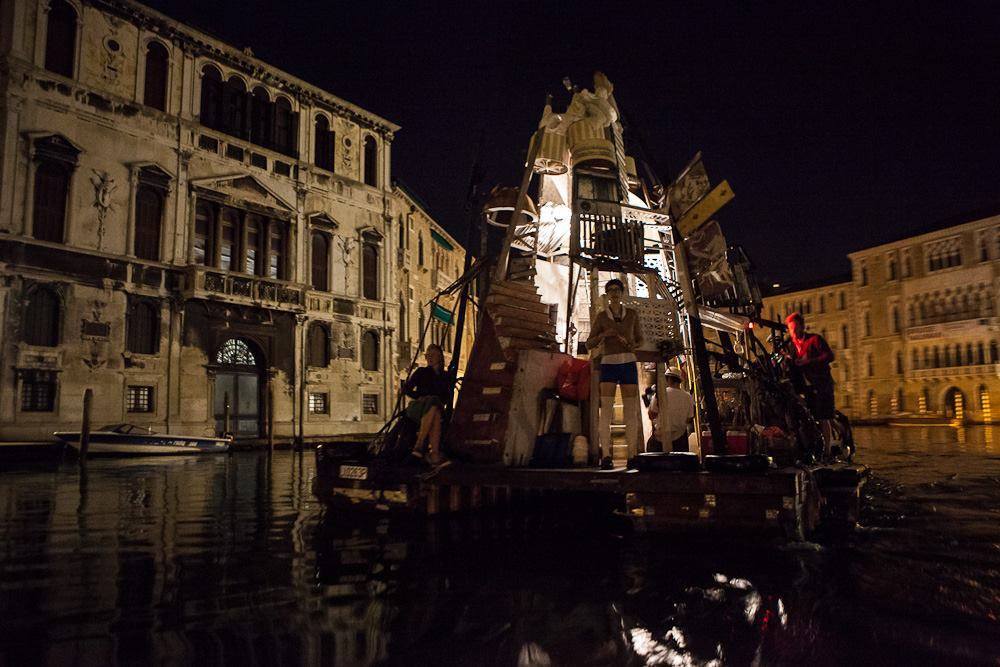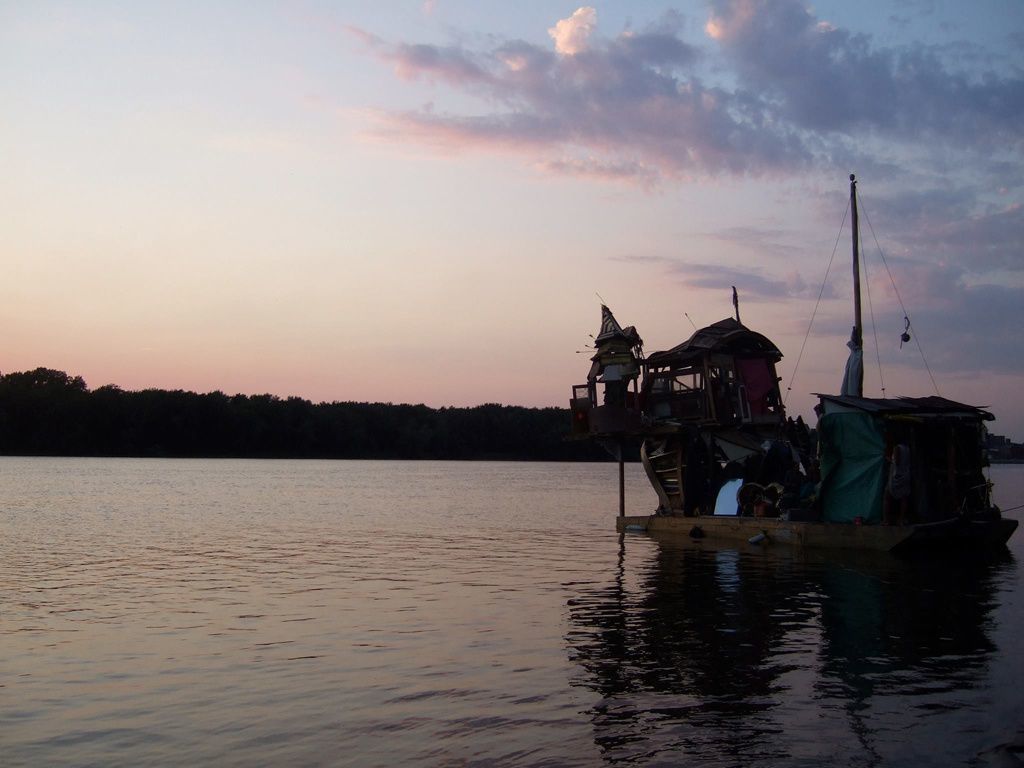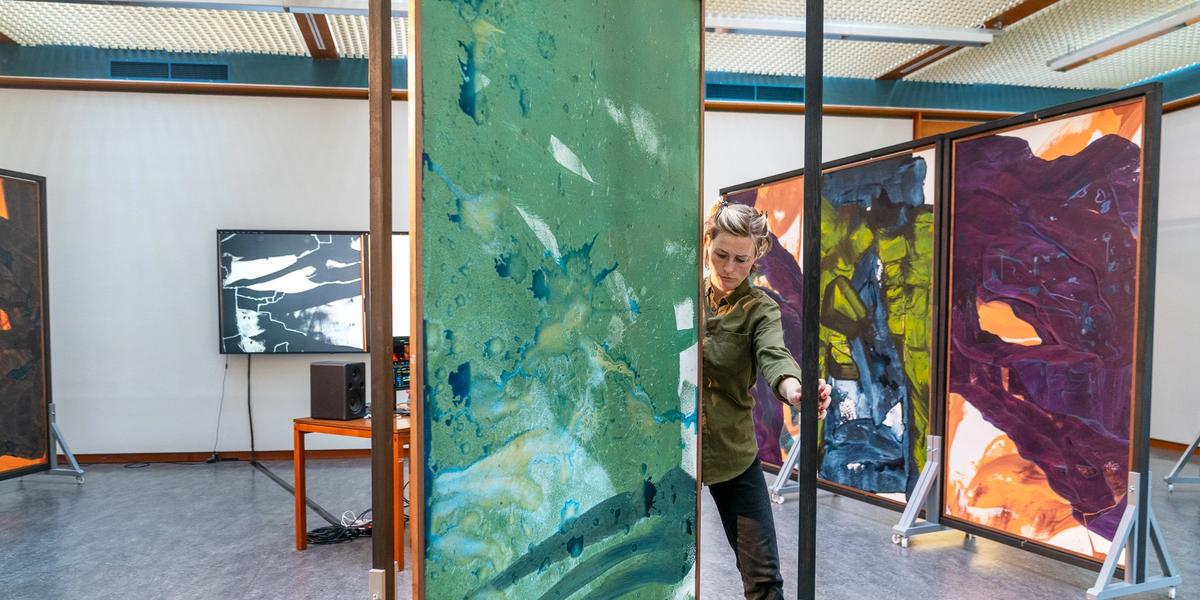Although true to her individual vision, Swoon’s artistic practice is consistently rooted in collaboration and community. (Other collaborative projects include Transformazium, Braddock Tiles, and Konbit Shelter.) At any given time, approximately 30 people lived, worked, played, and slept on the rafts, and many members of this community were involved in the return and reassembly of the boats at the museum, as well as in the creation of the installation as a whole. The bark of the tree was formed from reclaimed fabric, painstakingly hand-dyed by an army of studio members, and in order to fully take advantage of the museum’s height, the artist collaborated with an engineer to suspend the sculpture from the ceiling of the domed rotunda. For three weeks leading up to the opening, Swoon worked with a dedicated crew to unload, detangle, and reassemble the rafts; to print, cut and paint all included artwork; and finally, to carefully install everything to create a cohesive whole. She also invited friends and collaborators to enliven the space with concerts, discussions, and film screenings with live scores throughout the exhibition.



